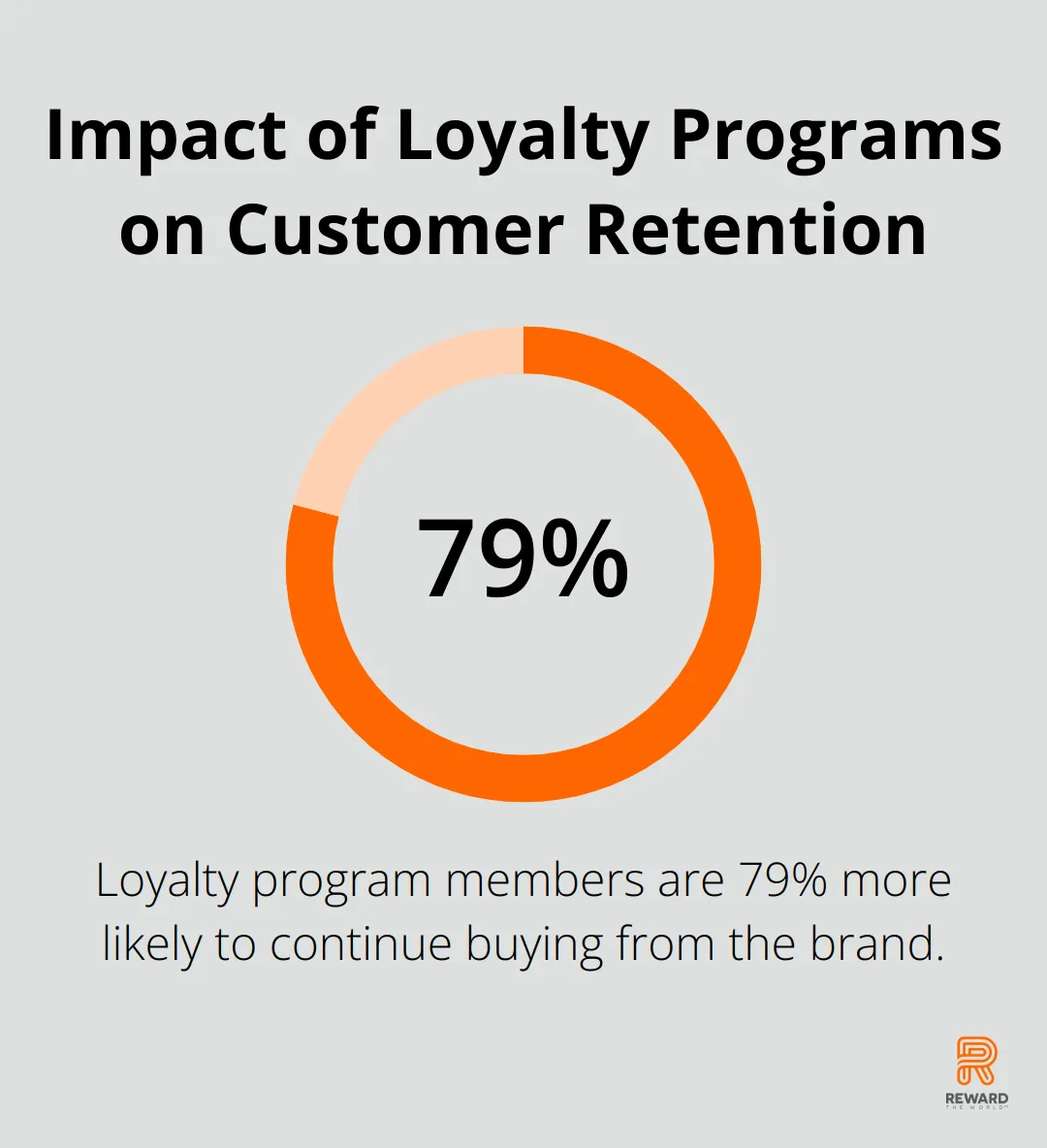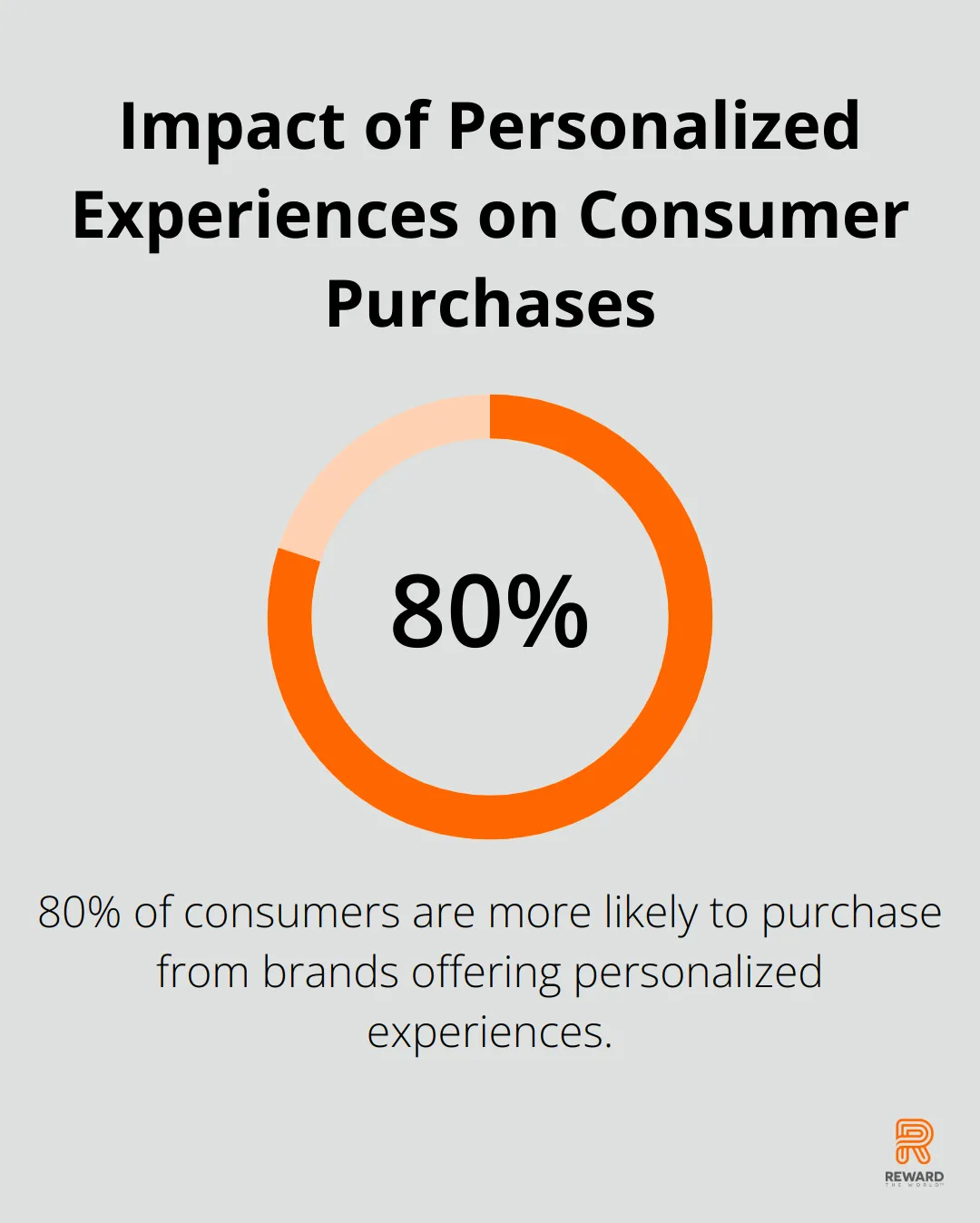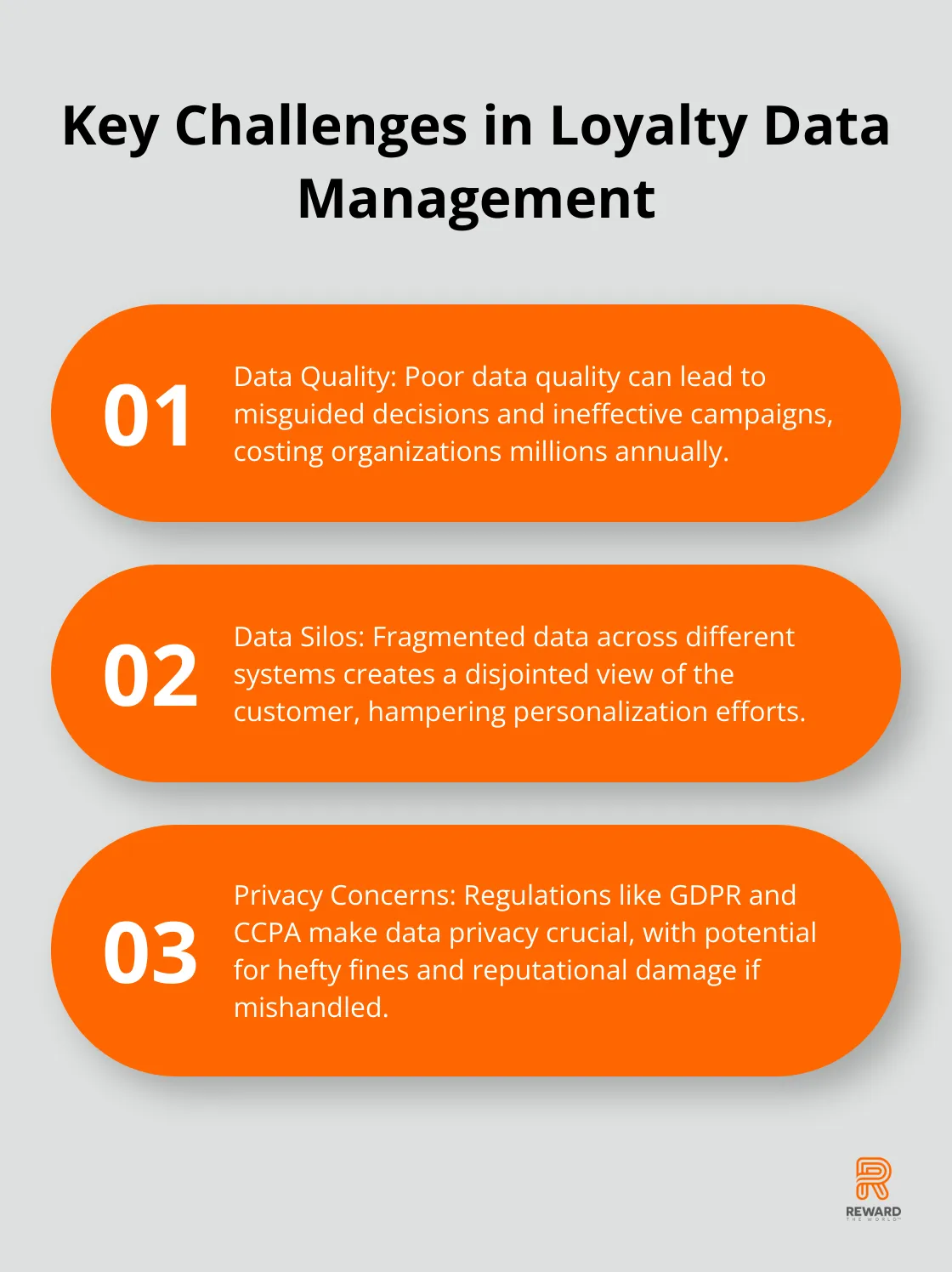
Loyalty programs are a goldmine of first-party data. This valuable information gives businesses unparalleled insights into customer behavior and preferences.
At Reward the World, we’ve seen how harnessing this data can transform marketing strategies and drive business growth.
In this post, we’ll explore how to maximize the value of your loyalty data and overcome common challenges in data management.
What Makes Loyalty Data So Valuable?
The Power of Purchase Patterns
Loyalty programs capture detailed purchase histories, revealing patterns that transcend simple transaction data. By tracking purchase histories, preferences, and engagement patterns, these programs provide companies with actionable insights into individual customer behavior. This insight enables targeted promotions and personalized offers that can significantly boost sales.
Demographic Gold
Loyalty programs collect valuable demographic information. This level of targeting becomes possible only with the rich data provided by loyalty programs.
Behavioral Insights
Loyalty data provides deep behavioral insights, showing not just what customers buy, but how they interact with your brand across multiple touchpoints. Organizations that leverage customer behavioral insights outperform peers by 85% in sales growth and more than 25% in gross margin.
Types of Loyalty Data
Loyalty programs collect a wide array of data points, including:
- Transactional data: Purchase history, frequency, and value
- Personal information: Name, age, location, and contact details
- Engagement data: How members interact with the program, redeem rewards, and respond to offers
- Feedback and preferences: Direct input from customers about their likes and dislikes
The Unique Value of Loyalty Data
What sets loyalty data apart is its accuracy and depth. Unlike third-party data or general market research, loyalty data comes directly from your most engaged customers. It’s real-time, specific to your business, and provides a longitudinal view of customer behavior.
Customers who are members of loyalty programs are 79% more likely to continue buying from that brand. This level of personalization becomes possible only with the rich, first-party data that loyalty programs provide.

Moreover, loyalty data allows for predictive analytics. Analysis of past behavior enables businesses to forecast future trends and customer needs. This predictive power proves invaluable for inventory management, product development, and targeted marketing campaigns.
As we move forward, we’ll explore how to leverage this data goldmine for tangible business growth. The next section will uncover practical strategies for turning loyalty insights into action, driving both customer satisfaction and your bottom line (while keeping data privacy and ethical considerations at the forefront).
How Loyalty Data Drives Business Growth
Personalized Customer Journeys
Personalization stands as a cornerstone for customer retention and increased sales. A 2018 Epsilon study reveals that 80% of consumers are more likely to make a purchase when brands offer personalized experiences. Companies can create highly targeted marketing campaigns and product recommendations through the analysis of loyalty data.

A clothing retailer might use purchase history data to suggest complementary items or alert customers about new collections from their favorite brands. This level of personalization enhances the customer experience and increases the probability of repeat purchases.
Anticipating Customer Needs
Predictive analytics based on loyalty data allows businesses to stay ahead of their customers. Companies can forecast future needs and preferences through the analysis of patterns in purchase behavior.
A grocery chain could stock up on certain products before a predicted surge in demand. Alternatively, a travel company might offer vacation packages to loyalty members based on their past travel history and browsing behavior.
The objective is to provide value to customers before they realize they need it. This proactive approach significantly boosts customer satisfaction and loyalty.
Refining Product Offerings
Loyalty data provides invaluable insights into product performance and customer preferences. This information guides product development, helping businesses create offerings that truly resonate with their customer base.
For instance, a beauty brand might notice that loyalty members who purchase a certain face cream often buy a specific serum as well. This insight could lead to the development of a combo product or a targeted bundle offer (which could potentially increase sales and customer satisfaction).
Optimizing Pricing Strategies
Companies can fine-tune their pricing to maximize both sales and customer satisfaction through the analysis of loyalty data. Different customer segments respond differently to various price points and promotions. This information allows businesses to create targeted pricing strategies that appeal to specific customer groups.
For example, a retailer might discover that price-sensitive customers respond well to percentage-off discounts, while luxury shoppers prefer exclusive early access to new products. Armed with this knowledge, the company can tailor its promotions to each segment, increasing overall revenue and customer satisfaction.
Enhancing Customer Service
Loyalty data also plays a crucial role in improving customer service. Companies can use this information to personalize interactions and resolve issues more effectively.
A telecommunications company, for instance, might use loyalty data to identify high-value customers and provide them with priority customer service. This approach not only improves customer satisfaction but also increases the likelihood of retention for these valuable clients.
As we move forward, it’s important to address the challenges that come with managing such valuable data. The next section will explore common hurdles in loyalty data management and provide strategies to overcome them, ensuring that businesses can fully harness the power of their loyalty data while maintaining customer trust and compliance with regulations.
Navigating the Loyalty Data Maze
While loyalty data offers immense potential, businesses often face several challenges in effectively managing and utilizing this valuable resource. Let’s explore the key hurdles and strategies to overcome them.

The Data Quality Conundrum
Poor data quality can derail even the most well-intentioned loyalty initiatives. Inaccurate or incomplete data leads to misguided decisions and ineffective campaigns. Gartner research shows that poor data quality costs organizations at least $12.9 million a year on average.
To combat this, businesses should implement rigorous data validation processes. Automated tools can flag inconsistencies and duplicates. Regular data audits are essential. Teams need training to spot and correct data errors promptly. The quality of insights depends entirely on the data quality (garbage in, garbage out).
Breaking Down Data Silos
Many businesses struggle with fragmented data across different systems. This fragmentation creates a disjointed view of the customer, which hampers personalization efforts.
The solution lies in investing in a robust Customer Data Platform (CDP) that can integrate data from multiple sources. This creates a unified customer profile, which enables more accurate targeting and personalization. Some platforms (like Reward the World) offer seamless integration capabilities, allowing businesses to consolidate data from various touchpoints effortlessly.
Navigating the Privacy Minefield
With regulations like GDPR and CCPA in place, data privacy is more important than ever. Mishandling customer data can lead to hefty fines and irreparable damage to a brand’s reputation.
To address these concerns, businesses should adopt a privacy-first approach. Transparency about data collection practices is key. Robust security measures protect customer information. Giving customers control over their data (allowing them to opt-out or delete their information if desired) builds trust. Regular updates to privacy policies ensure compliance with evolving regulations.
Overcoming Technical Challenges
The technical aspects of managing loyalty data can be daunting. Many businesses lack the in-house expertise to handle complex data systems. This can lead to inefficiencies and missed opportunities.
Partnering with specialized loyalty data management providers can help overcome these challenges. These providers offer expertise in data integration, analysis, and security. They can also provide scalable solutions that grow with the business.
Ensuring Data Actionability
Collecting data is only half the battle. The real challenge lies in turning that data into actionable insights. Many businesses struggle to translate raw data into meaningful strategies.
To make data actionable, businesses should focus on clear objectives. What specific questions does the data need to answer? How will these insights drive business decisions? Regular training for teams on data interpretation and application can significantly improve data utilization.
Final Thoughts
Loyalty data stands as a cornerstone of modern business strategy. This first-party data offers unparalleled insights into customer behavior and preferences, providing a competitive edge. Companies can create personalized experiences, predict future trends, and optimize their offerings with this valuable information.
The journey to maximize loyalty data value involves several challenges. Businesses must ensure data quality, integrate information from multiple sources, and navigate privacy regulations. Those who successfully address these hurdles position themselves to reap significant rewards in customer retention and revenue growth.
Reward the World helps businesses harness the potential of loyalty data. Our platform offers a comprehensive solution for customer engagement and reward management across multiple languages and markets. Companies that recognize loyalty data as more than just numbers will thrive, creating lasting relationships with their customers and driving growth in an increasingly competitive marketplace.
